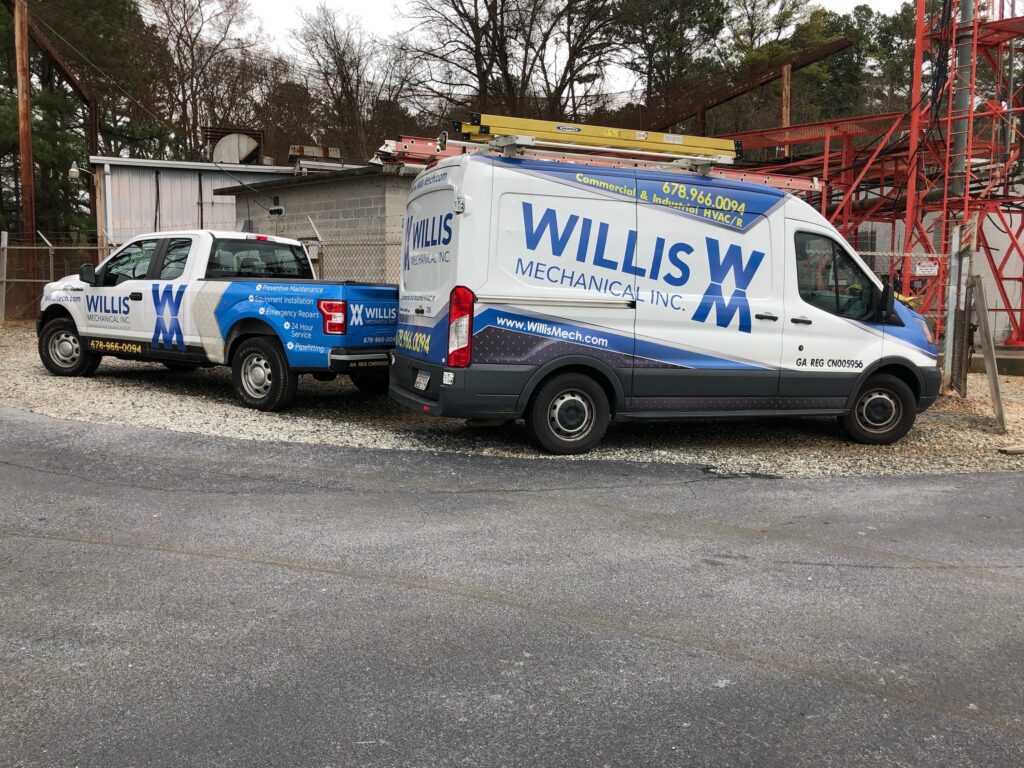Navigating the Transition: Understanding the Phasing Out of R-410A and the Introduction of New Refrigerants
Introduction: As a commercial mechanical contractor, part of our responsibility is to keep our clients informed about changes in the industry. One significant shift currently taking place is the phasing out of R-410A, a widely used refrigerant, and the emergence of newer, slightly flammable refrigerants. In this article, we will delve into the reasons behind this transition, address concerns regarding fire hazards, and shed light on the equipment and training requirements associated with these new refrigerants.
- The Phasing Out of R-410A: R-410A has long been the go-to refrigerant for air conditioning and heat pump systems due to its high energy efficiency and environmental friendliness compared to its predecessors, such as R-22. However, its high global warming potential (GWP) has prompted a shift toward more environmentally sustainable alternatives. Here’s what you need to know:
a. Environmental Impact: R-410A has a GWP that contributes to climate change when released into the atmosphere. In response, regulatory agencies worldwide are mandating the phase-out of high-GWP refrigerants to mitigate their environmental impact.
b. Global Agreements: The Kigali Amendment to the Montreal Protocol, a global environmental agreement, calls for a reduction in the production and consumption of hydrofluorocarbon (HFC) refrigerants, including R-410A. This agreement aims to limit global warming potential and transition to lower-GWP alternatives.
- Introduction of Newer, Slightly Flammable Refrigerants: To meet the growing need for environmentally friendly options, manufacturers are introducing newer refrigerants with lower GWPs. Some of these replacements, such as R-32 and R-454B, are classified as mildly flammable. Let’s address common concerns surrounding these refrigerants:
a. Fire Hazard: While the term “flammable” might raise concerns, it’s essential to understand that newer refrigerants are classified as slightly flammable. When used in HVAC systems, these refrigerants pose a very low fire hazard, especially in properly designed and maintained equipment.
b. Safety Precautions: Manufacturers have developed refrigerant blends with enhanced safety features, including reduced flammability and enhanced ignition resistance. The design and construction of equipment using these refrigerants adhere to strict safety standards to minimize any potential risks.
- Equipment and Training Requirements: To ensure safe installation and maintenance of equipment using these newer refrigerants, some additional considerations come into play:
a. Equipment Compatibility: Not all existing equipment is compatible with the newer refrigerants. It is important to consult with a knowledgeable mechanical contractor to determine if the equipment can be retrofitted or if replacement is necessary to accommodate the new refrigerants.
b. Training and Certification: Working with mildly flammable refrigerants requires specialized training and certification for HVAC technicians. Contractors and technicians should receive proper education on handling, installation, servicing, and leak detection procedures specific to these refrigerants.
Conclusion: The HVAC industry is undergoing a transition towards more environmentally friendly refrigerants, necessitating the phasing out of high-GWP options like R-410A. The emergence of newer, slightly flammable refrigerants provides greener alternatives, accompanied by enhanced safety features. It is crucial for commercial mechanical contractors and their clients to stay informed about these changes to make informed decisions and ensure compliance with regulations.
While mildly flammable refrigerants do not pose significant fire hazards, it is essential to follow safety guidelines, adhere to equipment compatibility requirements, and engage trained technicians for installation and servicing. By staying proactive and working with knowledgeable contractors, clients can embrace these changes and benefit from the increased energy efficiency and reduced environmental impact offered by these new refrigerants.
Together, we can navigate this transition towards a more sustainable future for the HVAC industry.
Note: It is important to consult the specific regulations, guidelines, and recommendations provided by regulatory agencies, manufacturers, and industry associations for detailed and up-to-date information regarding refrigerant transitions, safety protocols, and equipment requirements.

